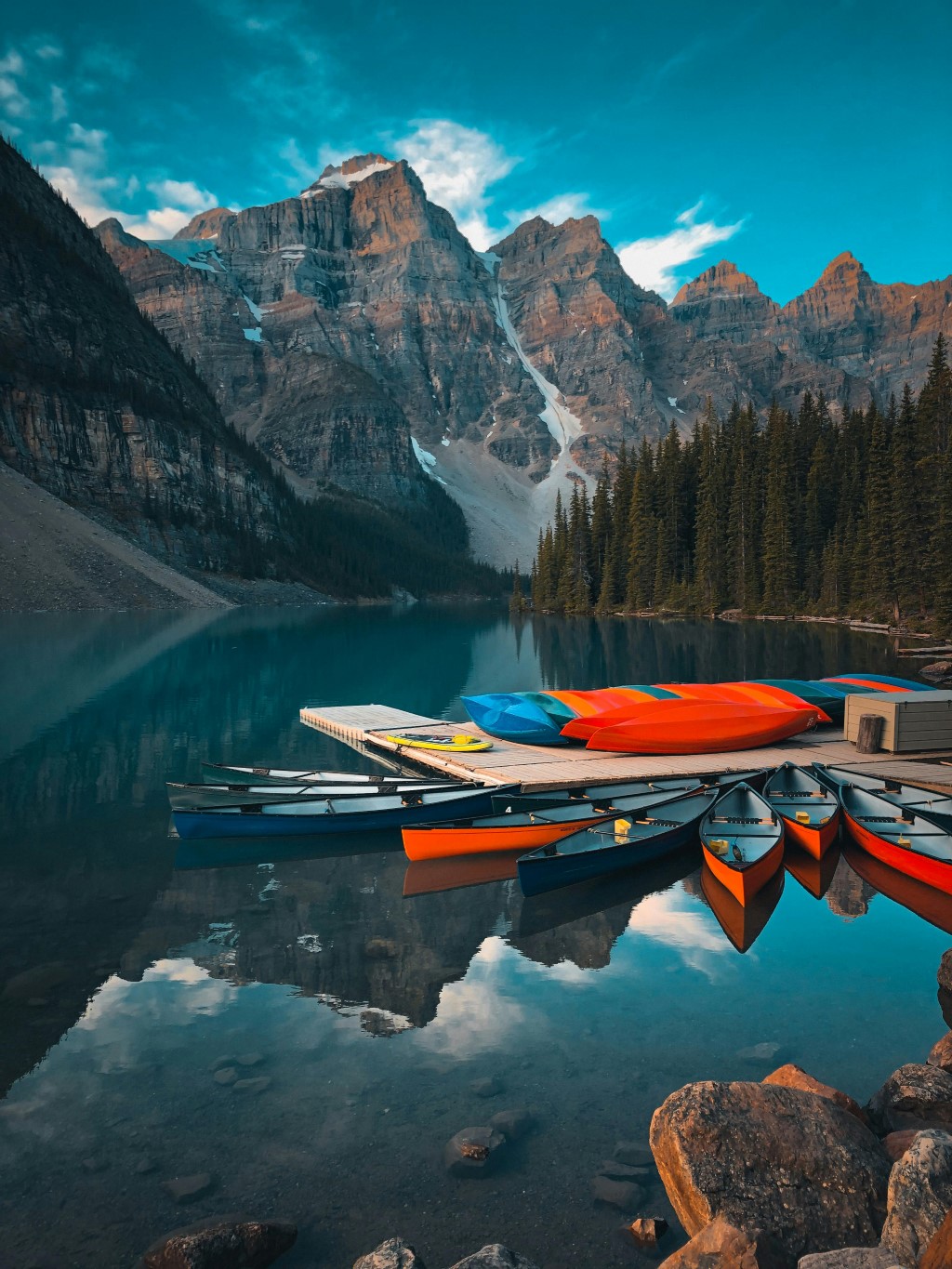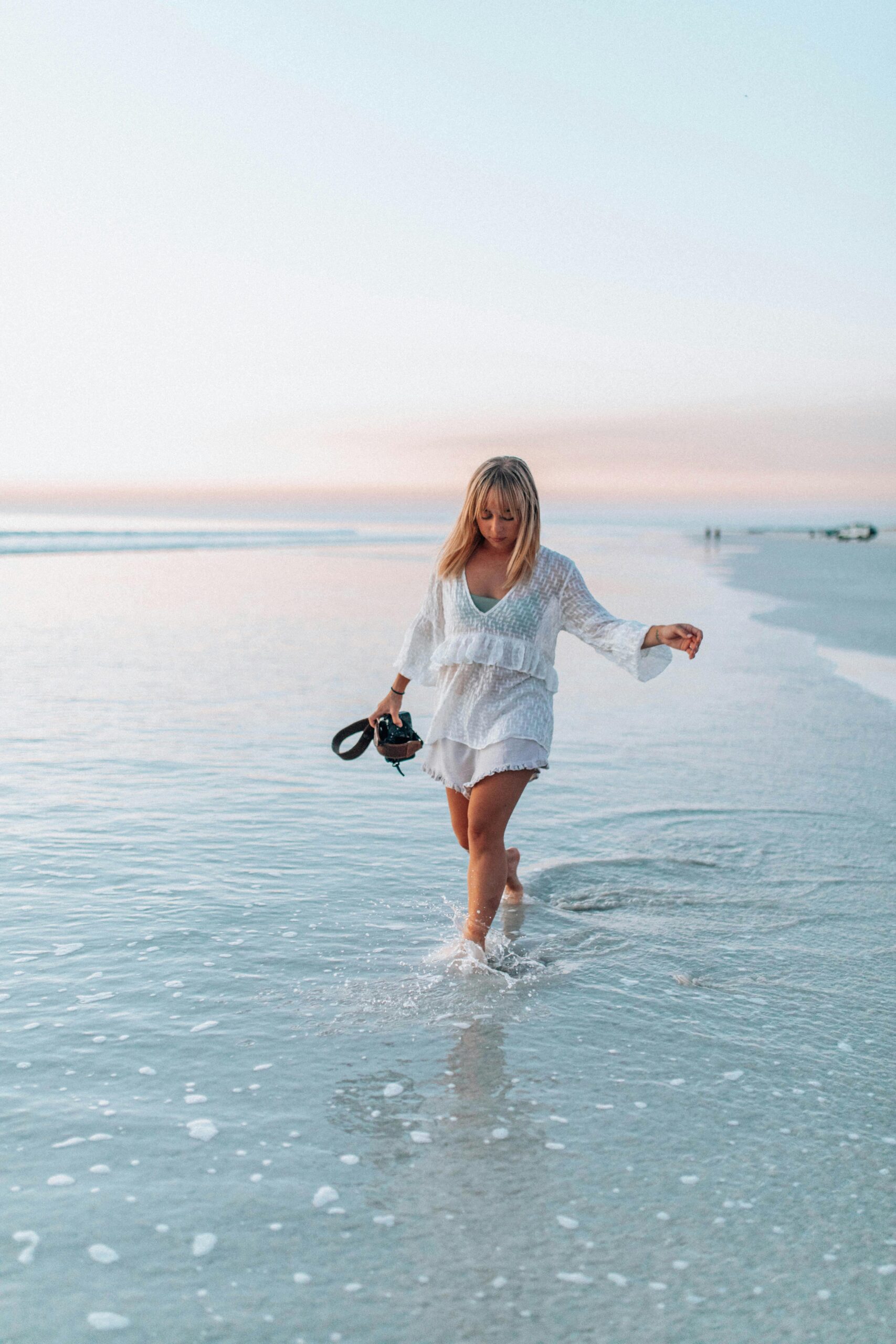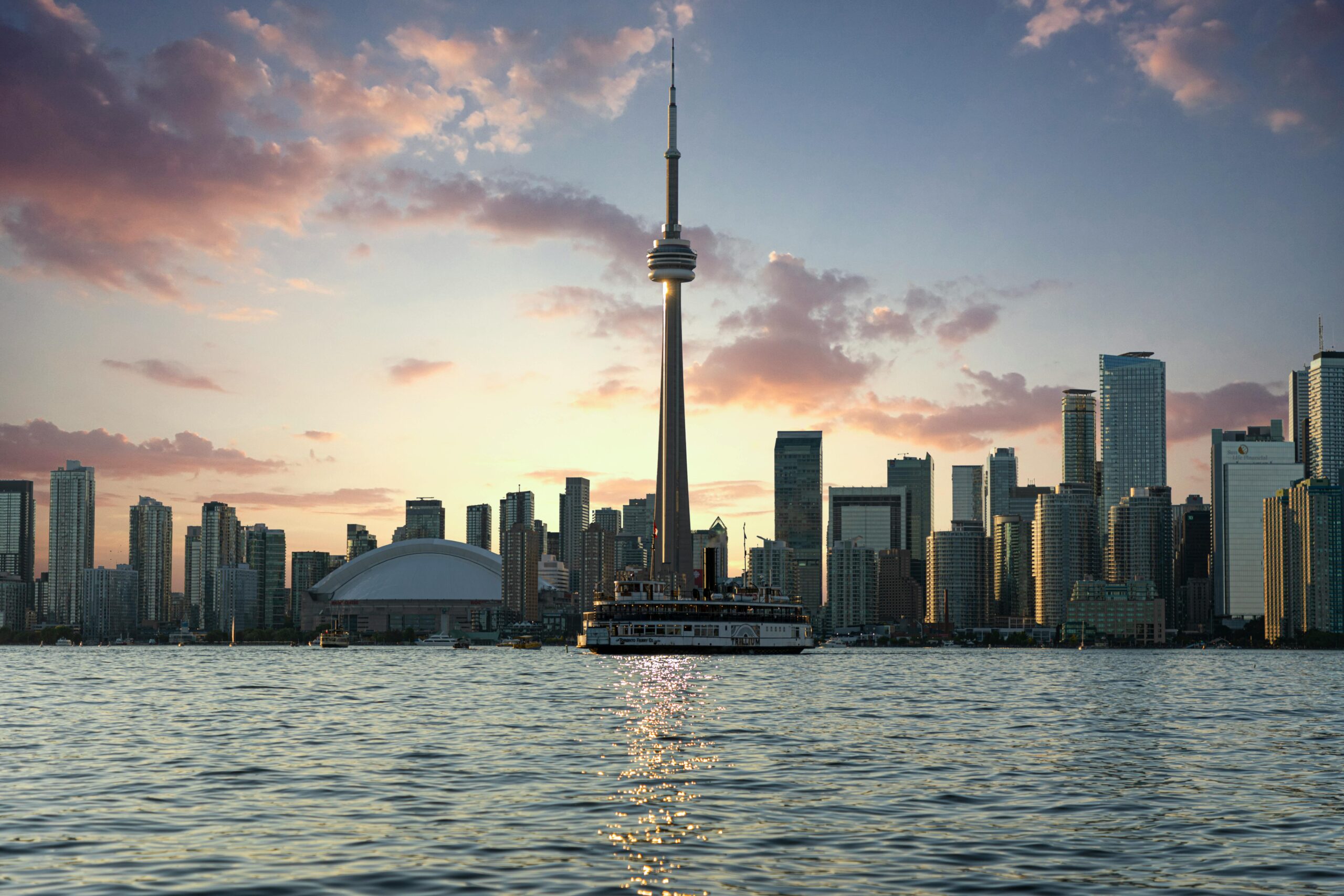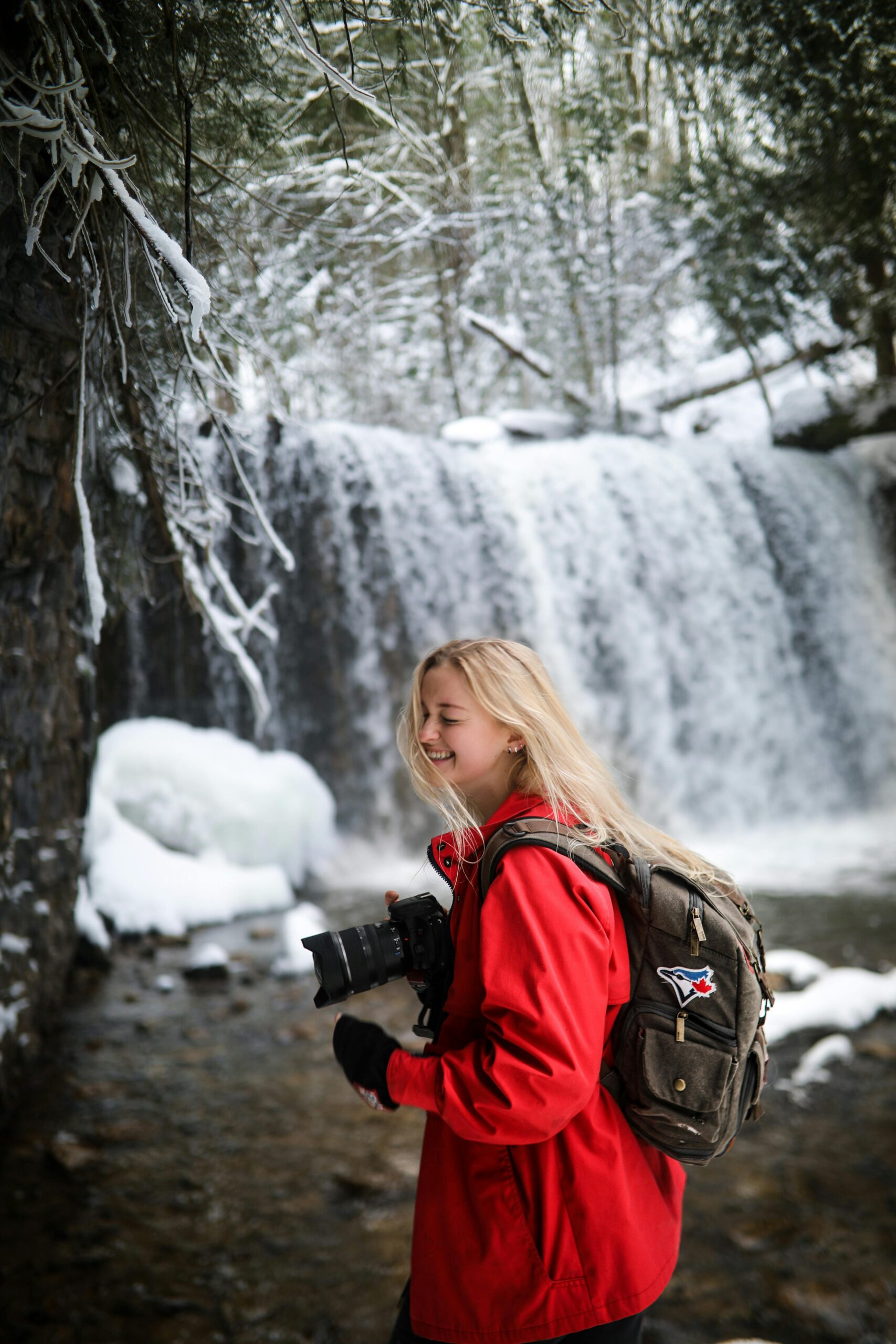Canada’s vast landscape offers some of the world’s most spectacular photography opportunities, from the rugged Atlantic coastlines to the towering Rocky Mountains, and from the Arctic tundra to the Great Lakes’ shorelines. This comprehensive guide explores the unique characteristics, optimal timing, and specialized techniques for landscape photography across Canada’s diverse regions.
Whether you’re capturing the Northern Lights in the Yukon, photographing autumn colors in Quebec, or documenting coastal storms in Nova Scotia, understanding regional characteristics and seasonal patterns is essential for successful landscape photography in Canada.
Understanding Canada’s Geographic Diversity
Regional Climate Patterns Canada’s landscape photography opportunities are heavily influenced by regional climate patterns:
- Maritime climate (West Coast): Mild, wet winters; dry summers
- Continental climate (Prairies, Central Canada): Hot summers, cold winters, low precipitation
- Arctic climate (Northern territories): Short, cool summers; long, harsh winters
- Maritime climate (East Coast): Moderate temperatures, high precipitation year-round
Geological Diversity Understanding geological foundations helps photographers anticipate landscape features:
- Canadian Shield: Ancient rock formations, lakes, and boreal forests
- Rocky Mountains: Dramatic peaks, glacial valleys, alpine lakes
- Great Plains: Vast grasslands, agricultural landscapes, expansive skies
- Appalachian Mountains: Rolling hills, deciduous forests, river valleys

Western Canada Landscape Photography
British Columbia’s Coastal Regions The Pacific Coast offers diverse landscape opportunities:
Best Locations:
- Pacific Rim National Park: Dramatic coastlines, old-growth forests, storm watching
- Sea-to-Sky Highway: Mountain vistas, waterfalls, and coastal views
- Gulf Islands: Intimate landscapes, arbutus trees, and marine environments
- Haida Gwaii: Remote wilderness, ancient forests, and cultural landscapes
Optimal Timing:
- Storm season (October-March): Dramatic wave action and moody skies
- Summer (June-August): Clear skies, accessible high-elevation locations
- Spring (April-May): Wildflowers and fewer crowds
- Fall (September-October): Autumn colors and crisp light
Technical Considerations:
- Weather protection essential for equipment
- Polarizing filters crucial for coastal reflections
- Long exposures for smooth water effects
- Wide-angle lenses for expansive coastal scenes
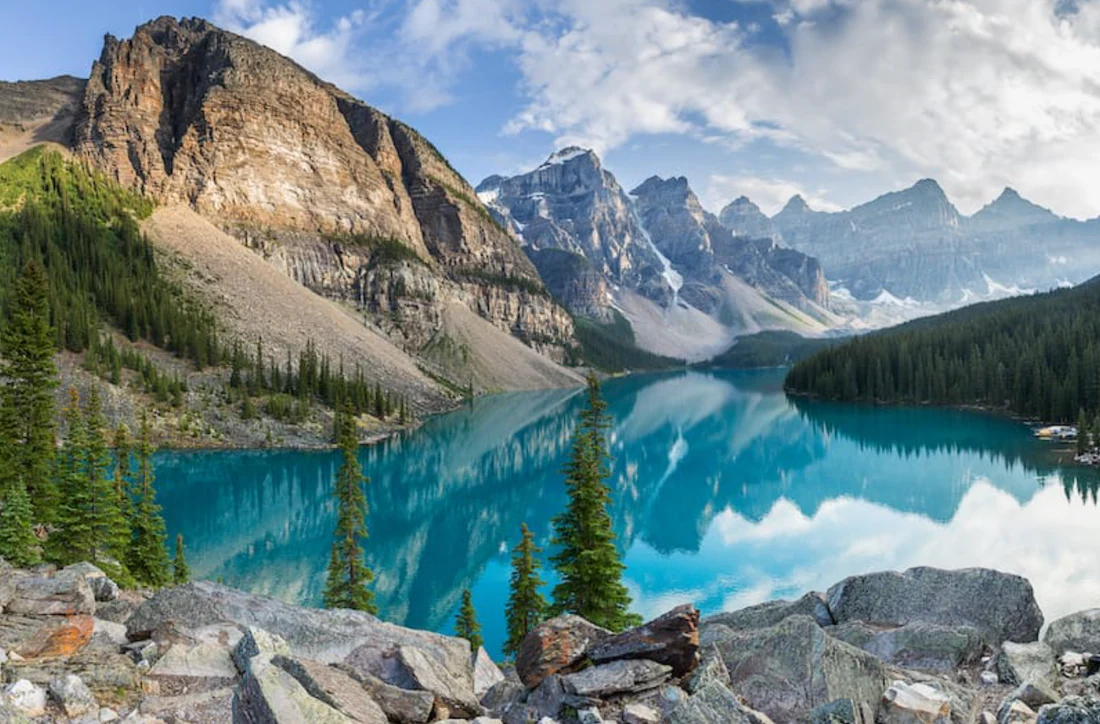
The Rocky Mountains Alberta and BC’s mountain regions provide world-class landscape photography:
Iconic Locations:
- Banff National Park: Lake Louise, Moraine Lake, Mount Assiniboine
- Jasper National Park: Maligne Lake, Mount Edith Cavell, Athabasca Falls
- Yoho National Park: Emerald Lake, Takakkaw Falls, Burgess Shale
- Kootenay National Park: Paint Pots, Marble Canyon, Numa Falls
Seasonal Strategies:
- Summer (July-September): Full access, wildflower meadows, stable weather
- Fall (September-October): Larch trees, fewer crowds, dramatic skies
- Winter (December-March): Snow-covered peaks, frozen waterfalls, Northern Lights
- Spring (April-June): Waterfalls at peak flow, emerging vegetation
Mountain Photography Techniques:
- Golden hour timing: Mountains block light early, plan accordingly
- Foreground selection: Use alpine lakes, wildflowers, or rocks for composition
- Weather awareness: Conditions change rapidly at elevation
- Safety preparation: Inform others of plans, carry emergency equipment
Prairie Landscape Photography
The Great Plains’ Unique Character Often overlooked, the Prairies offer distinct landscape photography opportunities:
Saskatchewan and Manitoba Highlights:
- Grasslands National Park: Dark sky preserve, prairie dog colonies, badlands
- Cypress Hills: Elevated plateau, mixed forests, panoramic views
- Prince Albert National Park: Boreal forest, lakes, and wildlife
- Whiteshell Provincial Park: Canadian Shield landscapes, petroglyphs
Prairie Photography Techniques:
- Sky emphasis: Use wide-angle lenses to capture expansive skies
- Foreground elements: Incorporate prairie grasses, wildflowers, or farm buildings
- Storm photography: Prairies offer excellent storm-watching opportunities
- Minimalist compositions: Embrace the vast, open landscape aesthetic
Agricultural Landscapes:
- Canola fields (July): Bright yellow blooms create stunning foregrounds
- Wheat fields (August-September): Golden grain ready for harvest
- Sunflower fields (August): Manitoba’s sunflower crops at peak bloom
- Winter scenes: Snow-covered fields create minimalist compositions

Central Canada’s Diverse Landscapes
Ontario’s Natural Diversity Ontario offers everything from Great Lakes shorelines to boreal wilderness:
Key Locations:
- Algonquin Provincial Park: Fall colors, wildlife, pristine lakes
- Bruce Peninsula: Turquoise waters, limestone cliffs, ancient cedars
- Muskoka Region: Lake country, granite outcrops, cottage landscapes
- Thousand Islands: River landscapes, historic architecture, island scenery
Great Lakes Photography:
- Superior’s north shore: Dramatic cliffs, sea stacks, powerful waves
- Huron’s coastline: Sandy beaches, dunes, lighthouse subjects
- Erie’s shores: Sunset photography, ice formations, storm watching
- Ontario’s islands: Toronto Island views, conservation area landscapes
Quebec’s Distinctive Character Quebec combines French cultural elements with diverse natural landscapes:
Landscape Highlights:
- Laurentian Mountains: Fall foliage, ski resort landscapes, historic villages
- Gaspé Peninsula: Dramatic coastlines, Percé Rock, fishing villages
- Saguenay Fjord: One of world’s southernmost fjords, whale watching
- Eastern Townships: Rolling hills, vineyards, covered bridges
Cultural Landscape Integration:
- Historic architecture in natural settings
- Traditional farming landscapes
- French-influenced village compositions
- Industrial heritage sites in natural contexts
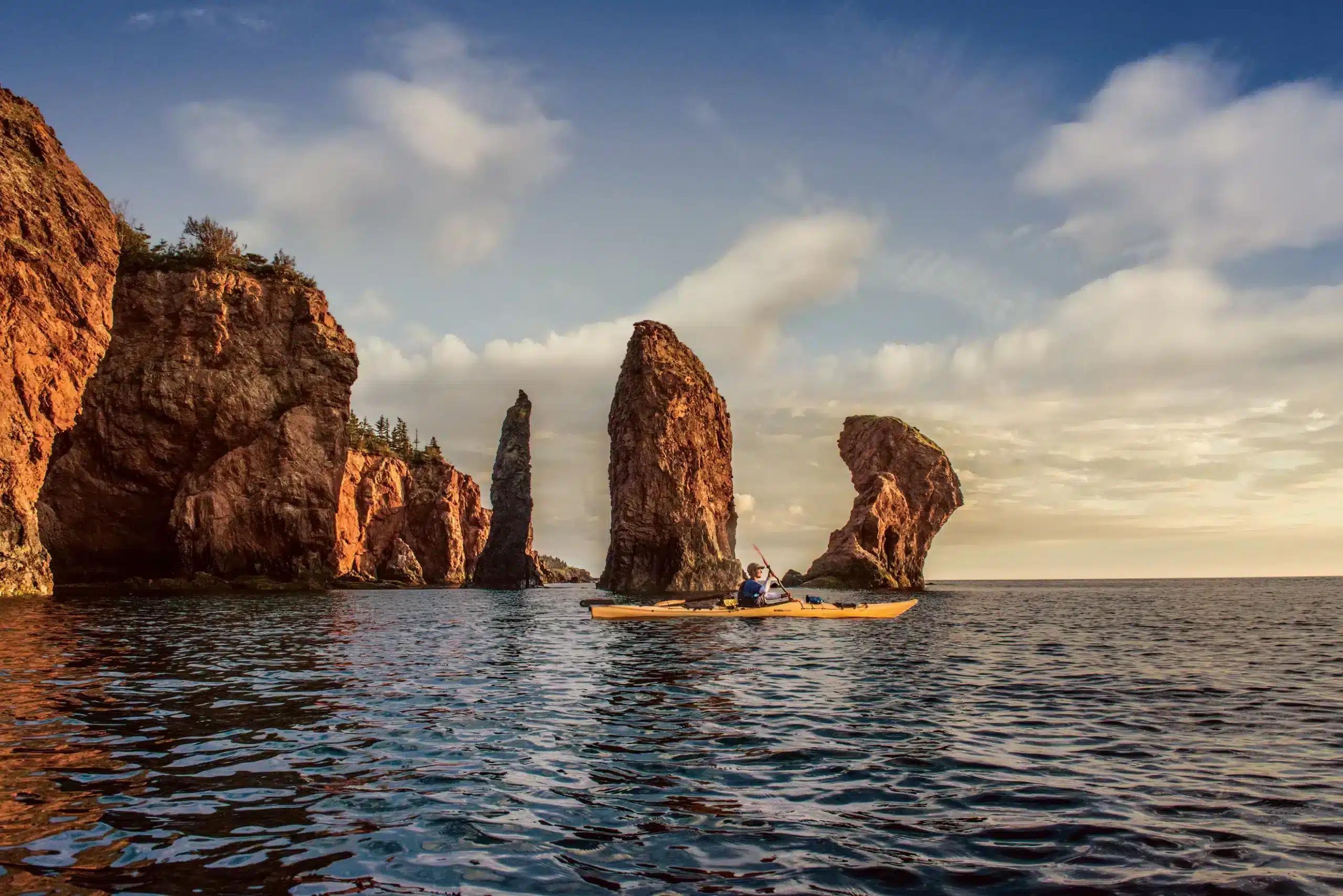
Atlantic Canada’s Coastal Beauty
Maritime Provinces’ Unique Appeal The Atlantic provinces offer some of Canada’s most dramatic coastal photography:
Nova Scotia Highlights:
- Bay of Fundy: World’s highest tides, sea stacks, tidal pools
- Cape Breton Highlands: Rugged coastlines, Celtic culture, fall colors
- Peggy’s Cove: Iconic lighthouse, granite shores, fishing village charm
- Annapolis Valley: Agricultural landscapes, orchards, historic sites
New Brunswick Features:
- Fundy National Park: Tidal phenomena, coastal forests, waterfalls
- Grand Manan Island: Seabird colonies, dramatic cliffs, lighthouse subjects
- Saint John River Valley: Agricultural landscapes, covered bridges
- Miramichi Region: River systems, forests, wildlife habitats
Prince Edward Island Character:
- Red sand beaches: Distinctive iron-rich sand creates warm tones
- Rolling farmland: Pastoral landscapes, potato fields, rural scenes
- Coastal dunes: Fragile ecosystems, beach grass, shorebird habitat
- Anne of Green Gables country: Literary landscapes, historic farms
Newfoundland and Labrador’s Raw Beauty:
- Gros Morne National Park: UNESCO World Heritage fjords and tablelands
- Iceberg photography: Best viewing April through June along coast
- Labrador wilderness: Remote landscapes, caribou migrations, tundra
- Coastal communities: Colorful houses, fishing harbors, cultural landscapes
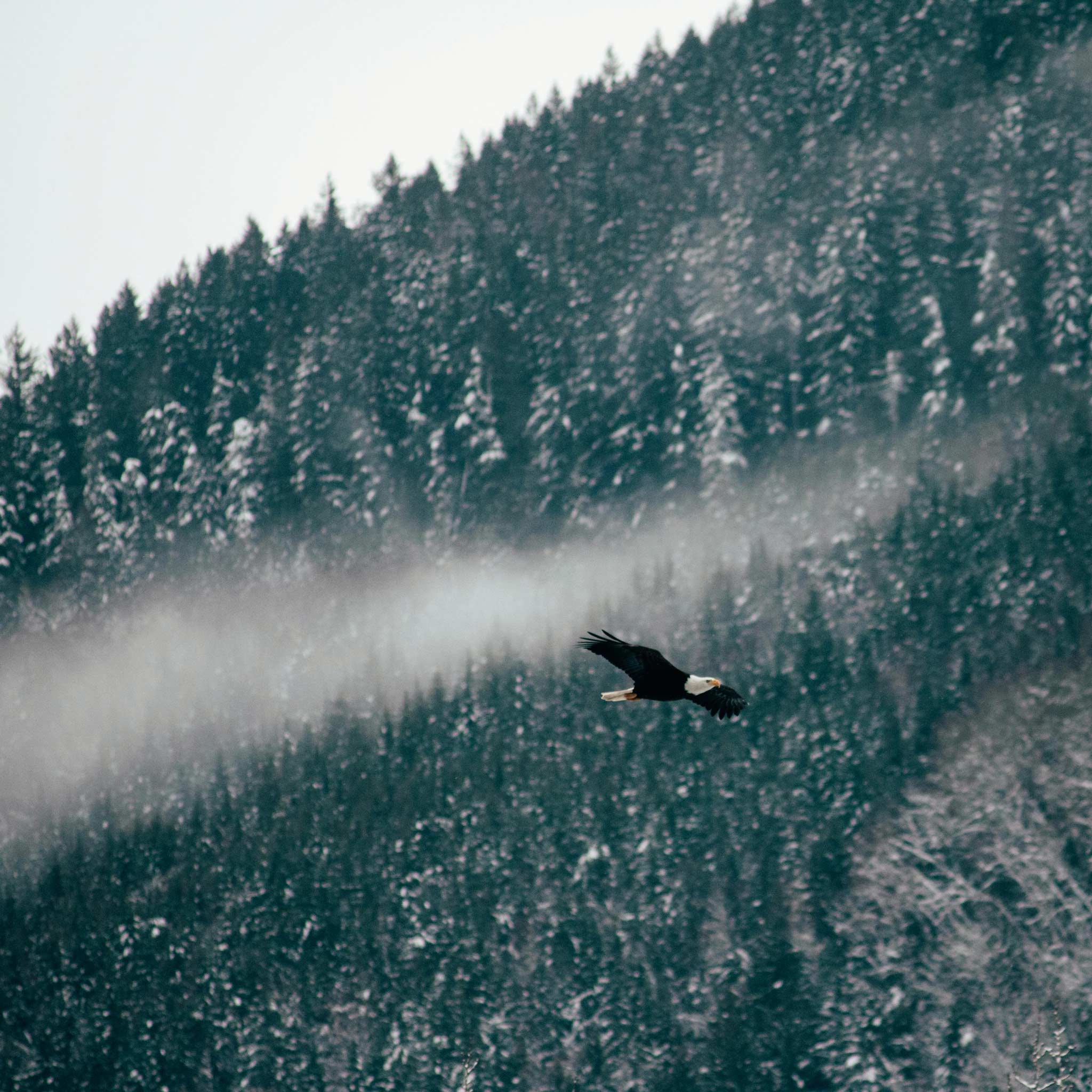
Northern Canada’s Extreme Landscapes
Yukon Territory Adventures Canada’s true wilderness offers unique photography challenges and rewards:
Key Locations:
- Tombstone Territorial Park: Dramatic peaks, tundra landscapes, fall colors
- Klondike Highway: Historic gold rush route, mountain vistas
- Dempster Highway: Only road to Arctic Ocean in Canada, tundra landscapes
- Whitehorse area: Northern Lights photography, river valleys
Northern Lights Photography:
- Optimal season: September through March
- Equipment needs: Sturdy tripod, intervalometer, extra batteries
- Camera settings: Manual mode, wide aperture, 15-25 second exposures
- Location requirements: Dark skies away from light pollution
Northwest Territories Wilderness:
- Nahanni National Park: Virginia Falls, river canyons, hot springs
- Great Slave Lake: Vast lake systems, aurora photography
- Mackenzie Mountains: Remote peaks, caribou migration routes
- Yellowknife area: Aurora viewing capital, subarctic landscapes
Nunavut’s Arctic Landscapes:
- Baffin Island: Dramatic fjords, Inuit culture, polar wildlife
- Arctic tundra: Midnight sun photography, caribou migrations
- Sea ice formations: Unique formations, polar bear habitat
- Cultural integration: Respectful documentation of Inuit communities
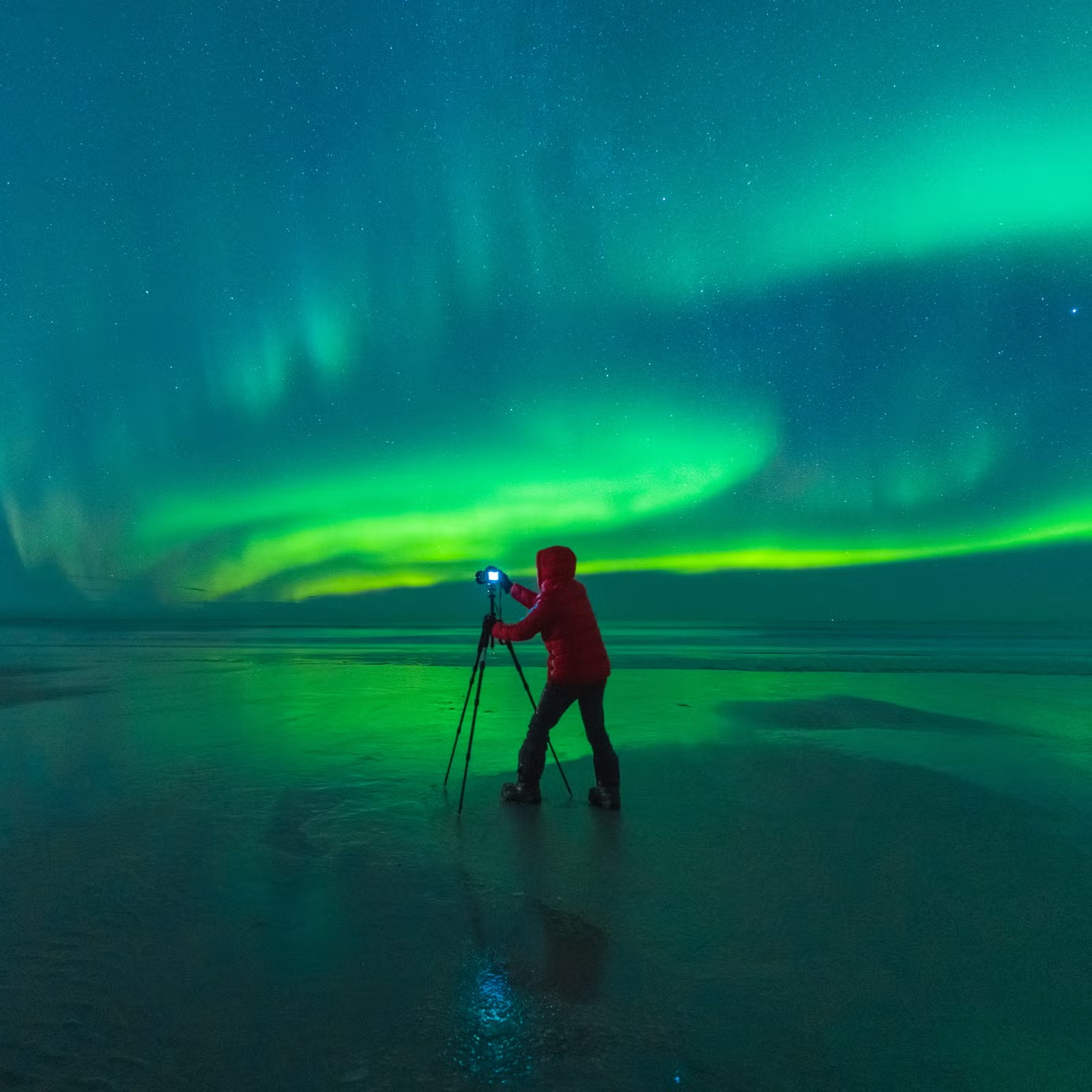
Seasonal Photography Strategies
Spring Photography (March-May) Spring offers unique opportunities across Canada:
- Waterfalls: Peak flow from snowmelt
- Wildflowers: Depends on region and elevation
- Migration: Bird and animal photography opportunities
- Ice breakup: Dramatic ice formations on lakes and rivers
Summer Photography (June-August) Peak season for accessibility and weather:
- Midnight sun: Northern regions offer extended shooting hours
- Wildflower meadows: Alpine and prairie regions at peak bloom
- Thunderstorms: Prairie regions offer spectacular storm photography
- Festival season: Cultural landscape photography opportunities
Fall Photography (September-November) Canada’s most celebrated landscape season:
- Fall foliage timing: Varies by latitude and elevation
- Harvest seasons: Agricultural landscape opportunities
- Aurora season: Northern lights photography begins
- Storm season: Atlantic Canada’s dramatic weather patterns
Winter Photography (December-February) Challenging but rewarding season:
- Snow landscapes: Minimalist compositions, texture studies
- Ice formations: Waterfalls, shorelines, river systems
- Aurora peak: Best Northern Lights photography conditions
- Winter wildlife: Tracking, snow adaptations, survival behaviors

Equipment Recommendations for Canadian Landscapes
Essential Camera Gear
- Full-frame DSLR or mirrorless: Better low-light performance, wider dynamic range
- Wide-angle lens (14-24mm): Essential for expansive landscapes
- Standard zoom (24-70mm): Versatile for various compositions
- Telephoto lens (70-200mm): Compression effects, distant subject isolation
Support and Stability
- Carbon fiber tripod: Lightweight yet stable for long exposures
- Ball head or pan-tilt head: Smooth adjustments, reliable locking
- Remote shutter release: Eliminate camera shake for sharp images
- Intervalometer: For time-lapse and long exposure sequences
Filters and Accessories
- Polarizing filter: Reduce reflections, enhance sky contrast
- Neutral density filters: Enable long exposures in bright conditions
- Graduated neutral density: Balance exposure between sky and land
- UV filter: Lens protection in harsh conditions
Weather Protection
- Rain covers: Protect equipment in wet conditions
- Lens cloths: Keep lenses clean and dry
- Silica gel packets: Prevent condensation in camera bag
- Extra batteries: Cold weather reduces battery performance significantly

Post-Processing for Canadian Landscapes
RAW File Advantages Shooting RAW provides maximum flexibility for Canadian landscape conditions:
- Exposure adjustment: Recover detail from high-contrast scenes
- Color temperature: Correct for various lighting conditions
- Highlight/shadow recovery: Balance exposure in challenging light
- Noise reduction: Essential for high-ISO aurora and low-light photography
Regional Color Palettes Different regions require different post-processing approaches:
- Maritime: Cool, muted tones reflecting Atlantic character
- Prairies: Warm, golden tones emphasizing vast skies
- Mountains: Cool, crisp tones highlighting snow and rock
- Forests: Rich greens and earth tones, seasonal color variations
Seasonal Adjustments
- Spring: Enhance fresh greens, balance snow and new growth
- Summer: Manage bright conditions, emphasize vibrant colors
- Fall: Enhance but don’t over-saturate autumn colors
- Winter: Maintain snow texture while ensuring proper exposure
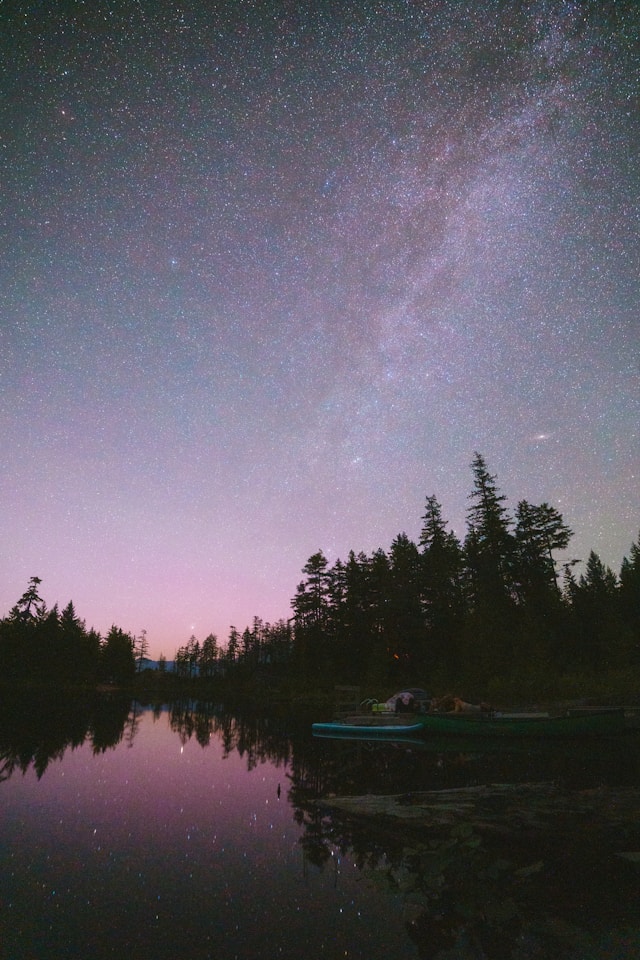
Planning and Logistics
Research and Preparation Successful Canadian landscape photography requires thorough planning:
- Weather monitoring: Multiple forecast sources, satellite imagery
- Seasonal timing: Research optimal conditions for specific locations
- Access information: Road conditions, park closures, permit requirements
- Safety considerations: Emergency contacts, equipment, survival gear
Smartphone Apps and Resources Essential tools for Canadian landscape photographers:
- Weather apps: Environment Canada, Weather Network
- Aurora predictions: Aurora Forecast, Space Weather Live
- Tide charts: For coastal photography timing
- Sunrise/sunset times: PhotoPills, Sun Surveyor
Cultural Sensitivity and Ethics Responsible photography practices:
- Indigenous territories: Respect traditional lands and protocols
- Leave No Trace: Minimize environmental impact
- Wildlife photography: Maintain safe, respectful distances
- Cultural sites: Obtain permission, respect restrictions
Canada’s landscape photography opportunities are truly world-class, offering everything from intimate forest scenes to vast wilderness vistas. Success requires understanding regional characteristics, seasonal timing, and technical challenges specific to Canadian conditions.
Remember that great landscape photography combines technical skill with artistic vision, patience with preparation, and respect for the environment with creative expression. Take time to understand each region’s unique character, and always prioritize safety and environmental responsibility.
The rewards of Canadian landscape photography extend far beyond the images themselves – they include deeper connections with Canada’s natural heritage, increased environmental awareness, and memories of extraordinary places that few people ever experience. Embrace the challenges, prepare thoroughly, and let Canada’s incredible landscapes inspire your photographic journey.
Each region offers unique rewards for the prepared photographer. Whether you’re drawn to the raw power of Atlantic storms, the serene beauty of prairie sunsets, or the dramatic grandeur of mountain peaks, Canada’s landscapes provide endless opportunities for creative expression and technical growth.
